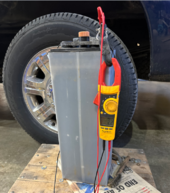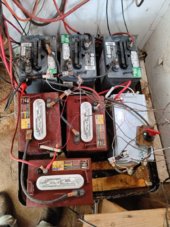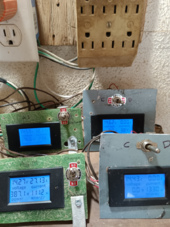electricthot
New Member
- Joined
- Aug 17, 2022
- Messages
- 32
Years ago, I had a dead car battery that I brought back to life by emptying it, flushing all the sulfiric acid out of it with an upside down rinse with a garden hose, and then filling each cell for a short time with a baking soda/water rinse. I've got some dead (useless in my off grid system), golf cart batteries I'm going to try it on this morning. From the point of view of chemistry, in the strict absence of any residual sulfuric acid, what will the lead sulfate do when flooded with the baking soda solution? I ask this to get an idead of how strong to mix the solution--I don't want undergirding exposed when I'm done.






